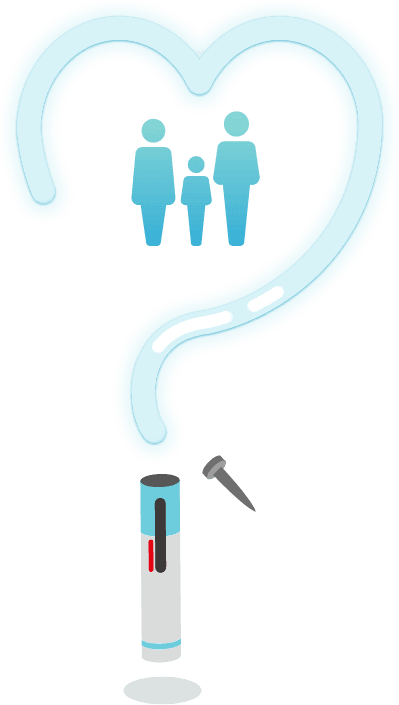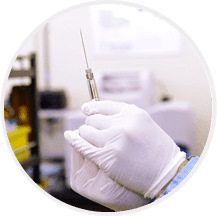R&D Story 03
Developing Sealants for Safer and Healthier Living Spaces
Some building materials, such as adhesives and sealants, are known to contain chemicals such as formaldehyde and volatile organic compounds that can cause health problems. Sunstar Engineering developed a line of sealing materials for construction that do not contain harmful compounds in order to ensure that buildings are safe and comfortable spaces for the wellbeing of people.
R&D Story 03
Developing Sealants for Safer and Healthier Living Spaces
Some building materials, such as adhesives and sealants, are known to contain chemicals such as formaldehyde and volatile organic compounds that can cause health problems. Sunstar Engineering developed a line of sealing materials for construction that do not contain harmful compounds in order to ensure that buildings are safe and comfortable spaces for the wellbeing of people.
---
Materials to Build Safe and Secure Spaces
Most of us spend a large amount of our days in our homes and offices. These spaces, which should be comfortable and safe, can make us sick if the air in the building is contaminated. Sick Building Syndrome (SBS) is a collective term used for physical illnesses caused by breathing polluted indoor air over an extended period of time. The risk of ailments has intensified as advanced sealing techniques have made buildings more airtight. This traps contaminants from building materials that are believed to trigger SBS: mold, microorganisms, and chemical vapors. Along with adhesives that contain volatile organic compounds such as toluene and xylene, sealants can present health risks even despite limited use in buildings.


Sealants are a rubber-like material used in most buildings. They are applied between walls and other building parts to protect them from colliding into each other when earthquakes and strong winds warp or shift these parts. They are also used for some inner fixtures like bathtubs and window frames. Ingredients utilized vary from urethane to silicone, giving a range of sealant types for different purposes.


Always strive to help people everywhere achieve better health and enhance their quality of life

For example, in 2004, the Japanese government identified and restricted the use of 13 volatile organic compounds (VOCs) in building construction. In 2006, the Korean government mandated all new apartment buildings to disclose chemical concentrations of their indoor air.
In response to the social and industrial demands, Sunstar initiated a project to develop innocuous sealants in line with the corporate philosophy, “Always strive to help people everywhere achieve better health and enhance their quality-of-life”.
Re-evaluating Every Ingredient
Sealants contain a variety of ingredients to fulfill functional needs: adhesion to surfaces, airtightness, and endurance to UV rays. The first step to developing healthier sealants was to thoroughly check the safety of each ingredient and to replace the hazardous ones. However, developing a product with limited ingredients is not easy. With the ingredients for a new sealant almost selected, the team repeatedly evaluated the prototype’s performance to withstand adverse weather conditions and natural disasters. The sealant’s adhesion, weatherability and chemical release measurements are the three standard tests performed out of many rigorous evaluations.


TEST 1
Adhesion Tests
Adhesion tests for sealants evaluate their adhesion between various materials used in buildings for their ability to protect buildings from air and water leakage. It is generally conducted with sealants that are already hardened under controlled conditions. Additionally, to simulate real life situations, we evaluate the endurance of hardened sealants after they are degraded by the effects of heat and water. Aside from the standard testing of adhesion to aluminum, concrete, and glass, Sunstar selected a wide variety of materials to test the sealant’s quality.
TEST 2
Weathering Tests
Organic compounds, such as those used in sealants, lose their color, strength, and flexibility after long-term exposure to sunlight. The extent of this damage needs to be examined under various weather conditions. The easiest and the most reliable method is to simply leave the material outside in natural conditions. However, this takes too long to produce results. Instead, sealants are evaluated through accelerated weathering tests, which simulate a year’s worth of degradation in just a few hundred hours.


TEST 3
Measuring Chemical Release
This is a test to assure that the concentration of VOCs released from sealants meet all guidelines. The air around the sealant is evaluated using gas chromatography at regular intervals – on Day 1, Day 3, and so on. This test confirms that the levels of the 13 VOCs dictated in the guidelines of the Japan’s Ministry of Health and Welfare in Sunstar’s indoor sealants are undetectable, meaning the amount found is so scarce that it cannot be detected.
Functionality and usability tests assure the quality that Sunstar strives for
Strict In-house Standards and Evaluation by the Builders
In addition to the tests required by the Japanese Industrial Standards and others, Sunstar has its own strict evaluation standards to assure outstanding safety and functionality, and offers only those products that meet these standards. When the prototype is ready, the R&D team asks experienced builders to assess its usability, in particular, how easily it comes out of the caulking gun and fills the seams, and the quality of the finish. Functionality and usability tests conducted directly by the end users assure both the quality and safety that Sunstar strives for.

Developing Ecologically-Friendly Products

Developing lightweight sealants

Reducing waste down to a seventh of its original output

Cutting down CO2 emissions from shipping







